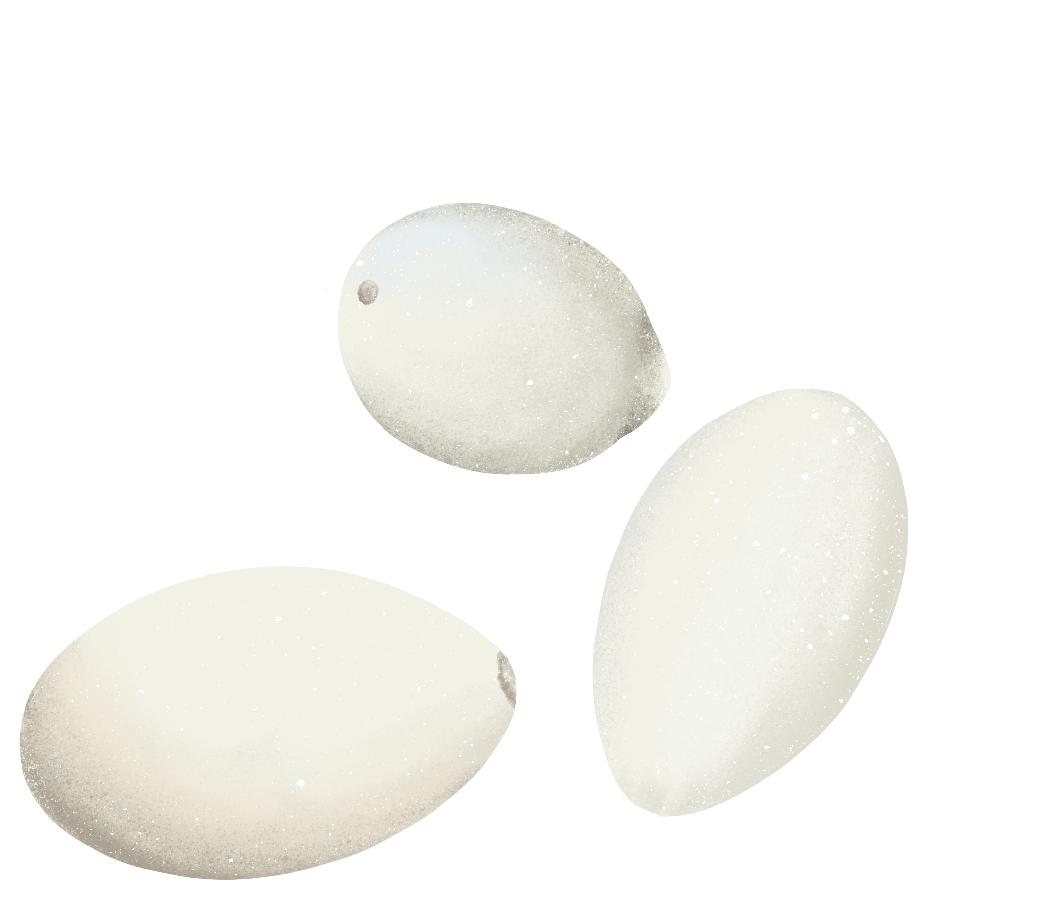
Squash
(Cucurbita pepo)
Squash (Cucurbita pepo ssp. ovifera var. ovifera) was an early domesticated crop in Eastern North America. Unlike the squash we are used to today, this squash was more gourd than squash, having a hard shell, and an egg-like shape. Shells of these squash have been found that date to 5000 B.C. Domestication of these plants can be seen archeologically through an increase in seed size. The seeds of the squash would have been eaten, but the hard rind also would have been used as fishing net floats and as scoops and containers.
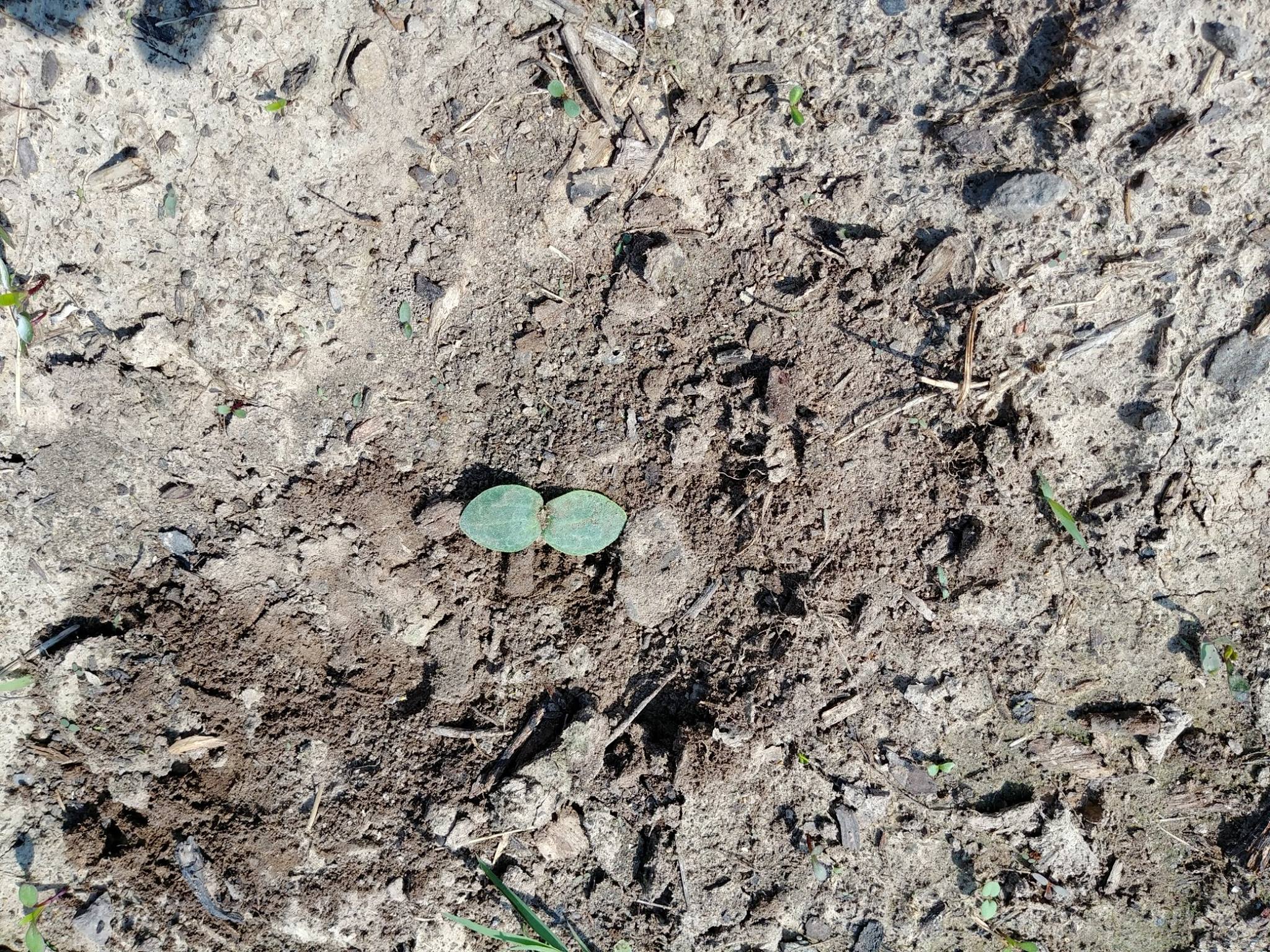
Squash seedling early May
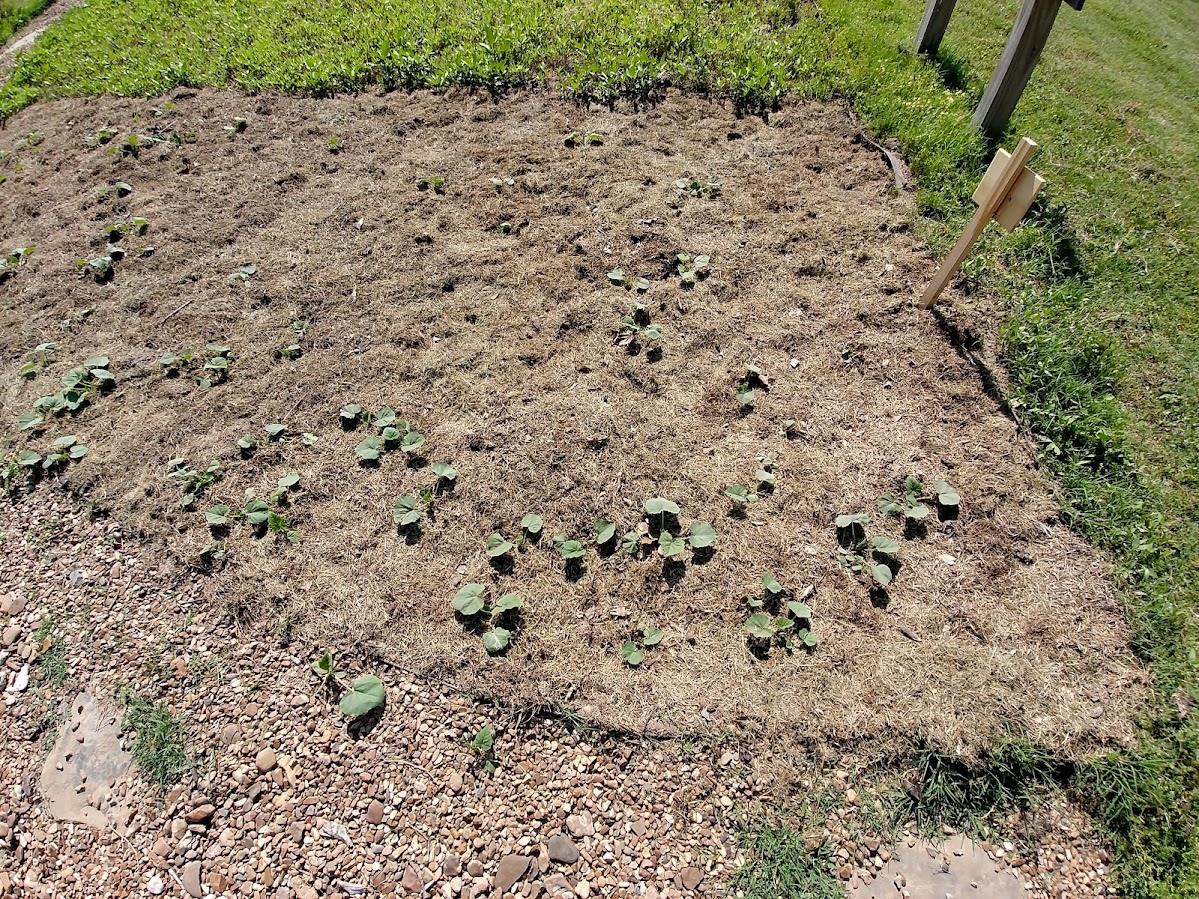
Young squash in May

Squash in June

Squash in July

Squash fruit forming

Squash floats. In addition to their edible seeds, some researchers have suggested that these hard shelled squash may have been used as floats for fishing. The dried squash certainly float.
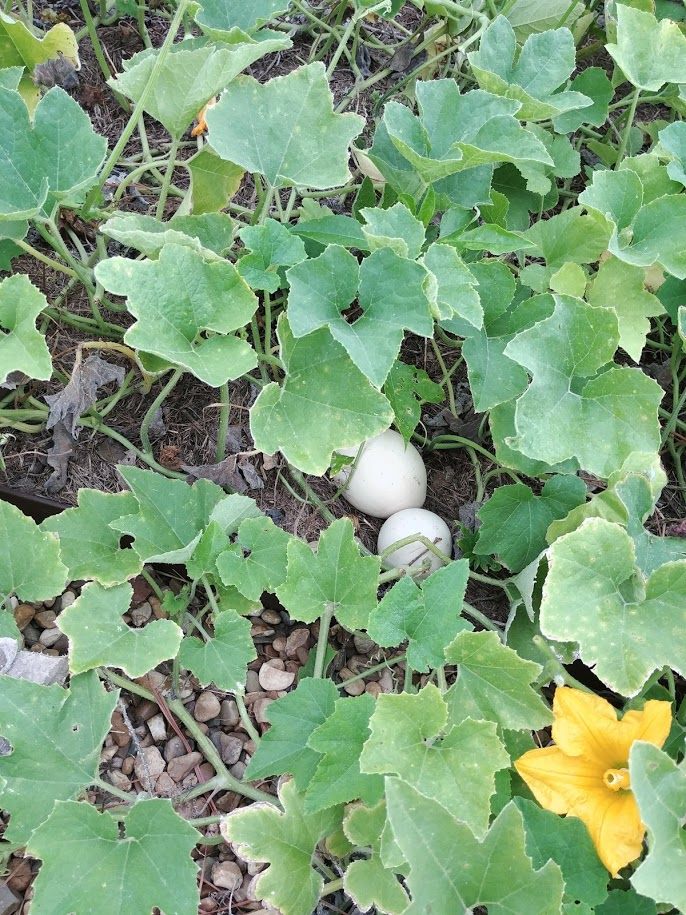
Squash in July
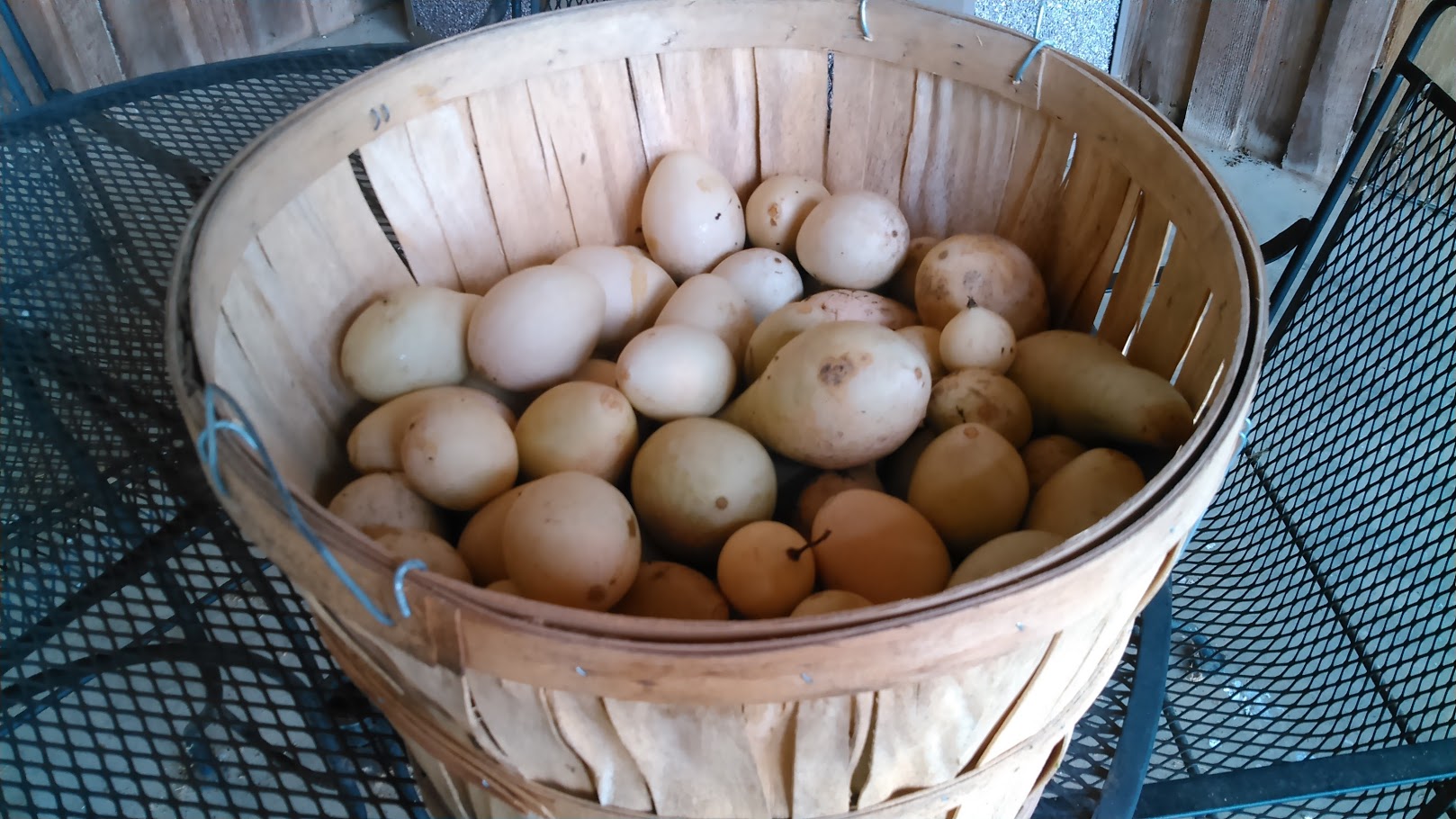
Dried and harvested squash in August

Squash seeds. Although the flesh of the Cucurbita pepo hard shelled squash is inedible, the seeds are edible.
Squash (C. pepo) References
Cutler, H. C. and T. W. Whitaker
1961 History and the Distribution of the Cultivated Cucurbits in the Americas. American Antiquity 26(4):469-485.
Decker, D. S.
1988 Origins, Evolution, and Systematics of Cucurbita pepo. Economic Botany 42:4-15.
1993 New Methods for Studying the Origins of New World Domesticates: The Squash Example. In Foraging and Farming in the Eastern Woodlands, edited by C. Margaret Scarry, pp. 91-97. University Press of Florida, Gainesville.
Fritz, Gayle J.
1999 Gender and the Early Cultivation of Gourds in Eastern North America. American Antiquity 64(3):417-429.
2019 Feeding Cahokia: Early Agriculture in the North American Heartland. University of Alabama Press, Tuscaloosa.
Hart, J. P., R. A. Daniels, and C. J. Sheviak
2004 Do Cucurbita pepo gourds float fishnets? American Antiquity 69(1):141-148.
Kay, M., F. B. King, and C. K. Robinson
1980 Cucurbits from Phillip Springs: New Evidence and Interpretations. American Antiquity 45: 806-822.
King, F. B.
1985 Early Cultivated Cucurbits in Eastern North America. In Prehistoric Food Production in North America, edited by R. I. Ford, pp. 73-98. Anthropological Papers 75, Museum of Anthropology, University of Michigan Press, Ann Arbor.
Mueller, Natalie G., Gayle J. Fritz, Paul Patton, Stephen Carmody, and Elizabeth T. Horton
2017 Growing the Lost Crops of Eastern North America’s Original Agricultural System, Nature Plants 3: 1-5.
Smith, Bruce D., and Richard A. Yarnell
2006 Seed Size Increase as a Marker of Domestication in Squash (Cucurbita pepo). In Documenting Domestication: New Genetic and Archaeological Paradigms, edited by Melinda A. Zeder, Daniel G. Bradley, Eve Emshwiller, and Bruce D. Smith, pp. 25-31. University of California Press, Berkeley.
2009 Initial Formation of an Indigenous Crop Complex in Eastern North America at 3800 B.P. Proceedings of the National Academy of Sciences 106(16):6561-6566.